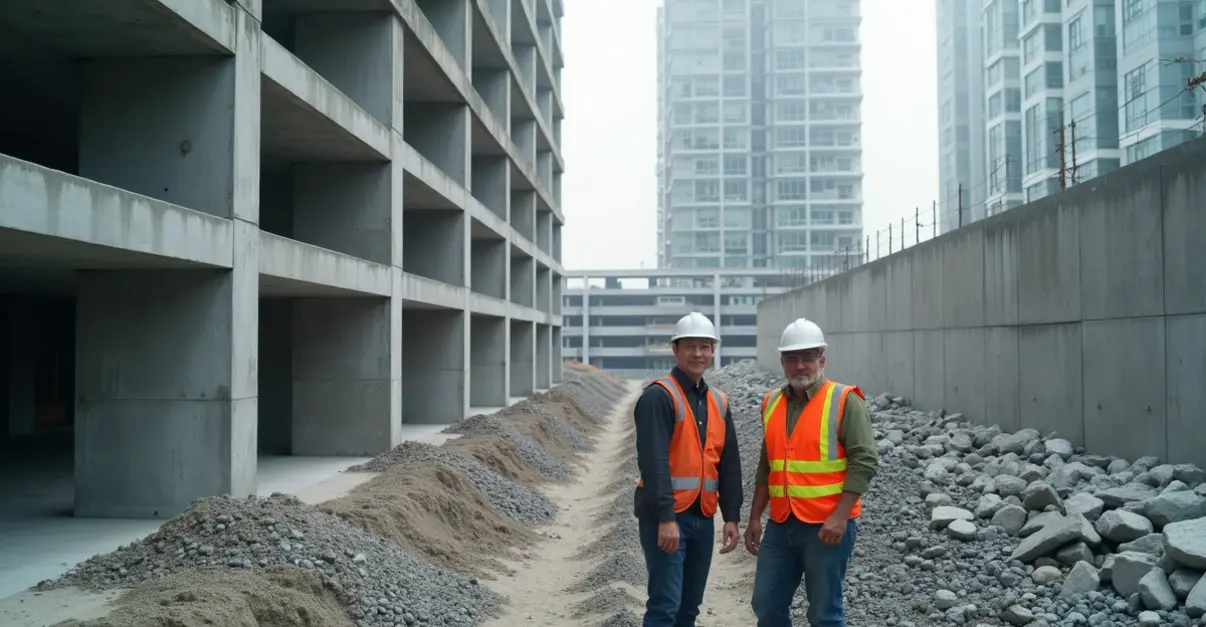Low-carbon concrete technologies are transforming construction with new chemistries reducing emissions by 8-80%. ACI 323-24 code establishes performance standards for 15% GWP reduction in large projects. Costs are 5-15% higher initially but expected to reach parity within 3-5 years.

The Concrete Revolution: Decarbonizing Construction
The concrete industry is undergoing a seismic shift as low-carbon alternatives challenge traditional cement chemistries. With concrete production accounting for nearly 8% of global CO2 emissions, the push for sustainable alternatives has never been more urgent. The American Concrete Institute's groundbreaking ACI 323-24 code represents the world's first comprehensive framework for low-carbon concrete, setting the stage for widespread adoption in 2025 and beyond.
Chemistry Behind the Change
Traditional Portland cement relies on energy-intensive processes that release significant CO2 during production. The calcination reaction alone—where limestone (CaCO3) transforms to lime (CaO)—accounts for approximately 60% of cement's carbon footprint. 'We're fundamentally rethinking how we make concrete,' says Dr. Maria Rodriguez, a materials scientist at MIT. 'The chemistry shift isn't just about reducing emissions—it's about creating smarter, more durable materials.'
Low-carbon alternatives include Portland-limestone cement (PLC), which reduces emissions by 8-10% by incorporating finely ground limestone into the mix. Geopolymer concrete, using industrial byproducts like fly ash and slag, can cut emissions by up to 80%. CarbonCure's mineralization technology, deployed in over 570 plants worldwide, injects captured CO2 into fresh concrete, enhancing strength while permanently sequestering carbon.
Cost Implications and Market Growth
The economic landscape for low-carbon concrete is rapidly evolving. While initial costs can be 5-15% higher than traditional concrete, long-term savings and environmental benefits are driving market adoption. The global low-carbon concrete market, valued at $1.8 billion in 2023, is projected to reach $3.8 billion by 2032, representing an 11.3% compound annual growth rate.
'The cost premium is temporary,' notes construction economist James Wilson. 'As production scales and technology improves, we expect price parity within 3-5 years. Meanwhile, the lifecycle cost benefits—including reduced maintenance and longer service life—make low-carbon concrete increasingly attractive.'
Strength and Performance Characteristics
Contrary to common misconceptions, low-carbon concrete often matches or exceeds traditional concrete's performance. ACI 323-24 covers compressive strengths ranging from 2,500 to 8,000 psi, accommodating most construction applications. Portland-limestone cement demonstrates comparable early and ultimate strength development, while geopolymer concrete typically achieves higher chemical resistance and durability.
'We've tested low-carbon mixes that actually outperform traditional concrete in aggressive environments,' reports structural engineer Sarah Chen. 'The key is proper mix design and curing—the same principles that apply to conventional concrete.'
Building Code Evolution
The ACI 323-24 code represents a paradigm shift in construction standards. Rather than prescribing specific chemistries, it establishes a performance-based framework focused on Global Warming Potential (GWP) reduction. Projects over 50,000 square feet must achieve at least 15% GWP reduction, while smaller projects face documentation requirements.
The code mandates Type III Environmental Product Declarations for GWP calculations and encourages localization of benchmarks. 'This isn't about reinventing the wheel,' explains code committee chair Robert Martinez. 'It's about providing a flexible framework that drives meaningful carbon reductions while maintaining structural integrity.'
Implementation Challenges and Solutions
Adoption faces several hurdles, including contractor education, supply chain development, and curing protocol adjustments. Portland-limestone cement, while offering immediate emission reductions, requires modified placement practices to prevent surface drying. Training programs and technical support are critical for successful implementation.
'The biggest challenge isn't technical—it's cultural,' observes sustainability consultant Lisa Park. 'We need to change how the entire construction ecosystem thinks about concrete. The tools exist; now we need the mindset shift.'
Future Outlook
The concrete industry's decarbonization journey is accelerating. With major players like Holcim, Heidelberg Materials, and Tarmac investing heavily in low-carbon technologies, and governments implementing carbon reduction mandates, the transition appears inevitable. The 2025 implementation of ACI 323-24 marks a critical milestone in this transformation.
'We're at the beginning of a concrete revolution,' predicts industry analyst Michael Thompson. 'Within a decade, low-carbon concrete will be the norm rather than the exception. The question isn't if we'll adopt these technologies, but how quickly.'

 Nederlands
Nederlands
 English
English
 Deutsch
Deutsch
 Français
Français
 Español
Español
 Português
Português









